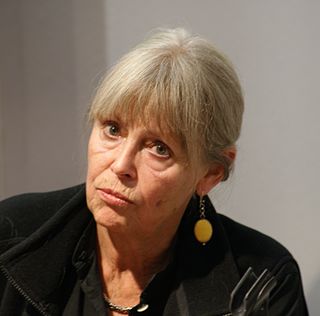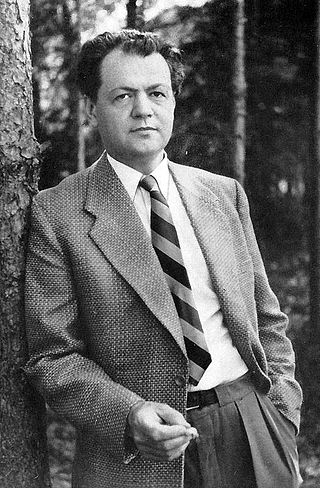Events in the year 1950 in Norway.
Events in the year 1955 in Norway.
Events in the year 1759 in Norway.
Events in the year 1754 in Norway.
Botnedalen is a valley in Tokke Municipality in Vestfold og Telemark county, Norway. The valley used to be the site a number of mountain farms that are no longer in use. The river that runs through the valley was dammed, creating the lake Botnedalsvatn. The lake is as a reservoir for the nearby Byrte Hydroelectric Power Station. Botnedalen is known for the occurrence of various minerals, including hausmannite, jacobsite, braunite, bustamite and rhodonite.

Agneta Pleijel is a Swedish novelist, poet, playwright, journalist and literary critic. Among her plays are Ordning härskar i Berlin from 1979. Among her novels are Vindspejare from 1987 and Drottningens chirurg from 2006. She has been a professor at Dramatiska Institutet since 1992. She was awarded the Dobloug Prize in 1991 and the Swedish Academy Nordic Prize in 2018.
Tobias Berggren was a Swedish poet. He made his literary debut in 1969. Among his later collections are Namn och grus from 1973 and Fält och legender from 1997. He was awarded the Dobloug Prize in 1992.
Anna Westberg was a Swedish journalist, novelist and non-fiction writer. She grew up in Ovansjö socken in Gästrikland. She made her literary debut in 1978, with the novel Paradisets döttrar. She co-edited the two-volume Kvinnornas litteraturhistoria from 1981/1983. She was awarded the Dobloug Prize in 1992.

Gustav Hedenvind-Eriksson was a Swedish novelist. He made his literary debut in 1910 with the novel Ur en fallen skog. Later novels are Vid Eli vågor from 1914, Järnets gåta from 1921, and På friköpt jord from 1930. His books often deal with his experiences as a logger, a navvy or a sailor, and are inspired by the oral storytelling he heard as a child in faraway Jämtland. He was awarded the Dobloug Prize in 1959.

Irja Agnes Browallius was a Swedish teacher, novelist and short story writer. She was awarded the Dobloug Prize in 1962.

Björn-Erik Höijer was a Swedish novelist, short-story writer and playwright.
Per Agne Erkelius was a Swedish novelist, playwright and teacher. He made his literary debut in 1961, with the novel Städerna vid havet. Other novels are Fotografen from 1976 and Rembrandt til sin dotter from 1998. He was awarded the Dobloug Prize in 1995.
Anne-Marie Berglund was a Swedish poet, novelist, short story writer and pictorial artist. She was born in Espoo and made her literary debut in 1977 with the poetry collection Luftberusningen. Among her later collections was Jag vill stå träd nu from 2000. Among her several literary prizes, she was awarded the Dobloug Prize in 2002.

Sven Viktor Rosendahl was a Swedish journalist, novelist and short story writer. Among his books are the short story collection Svartstarr from 1949 and the novel Gud fader och tattaren from 1951. He was awarded the Dobloug Prize in 1984.
Eva Virginia Runefelt is a Swedish novelist and poet. She made her literary debut in 1975, with the novel I svackan. Her poetry collections include En kommande tid av livet from 1975 and Mjuka mörkret from 1997. She was awarded the Dobloug Prize in 1994. She won De Nio Lyrical Prize in 2008 and the Tranströmerpriset in 2018.
Events in the year 1623 in Norway.

Mathias Soggemoen was a Norwegian railway worker, mountain climbing pioneer and guide.
Events from the year 1926 in Sweden
Gaute Heivoll is a Norwegian poet, novelist, playwright and short story writer.
Søilen Teater was a theatre that opened in Oslo in 1930. It was managed by Sophus Dahl until 1932. It was then a supporting stage for Chat Noir until 1934. From 1934 to 1939 the theatre was run by Henry Gleditsch, and from 1939 it was run by Aud Ricther. From 1942 it housed Leif Juster's stage Edderkoppen Theatre, and in 1945 it housed Studioteatret.






